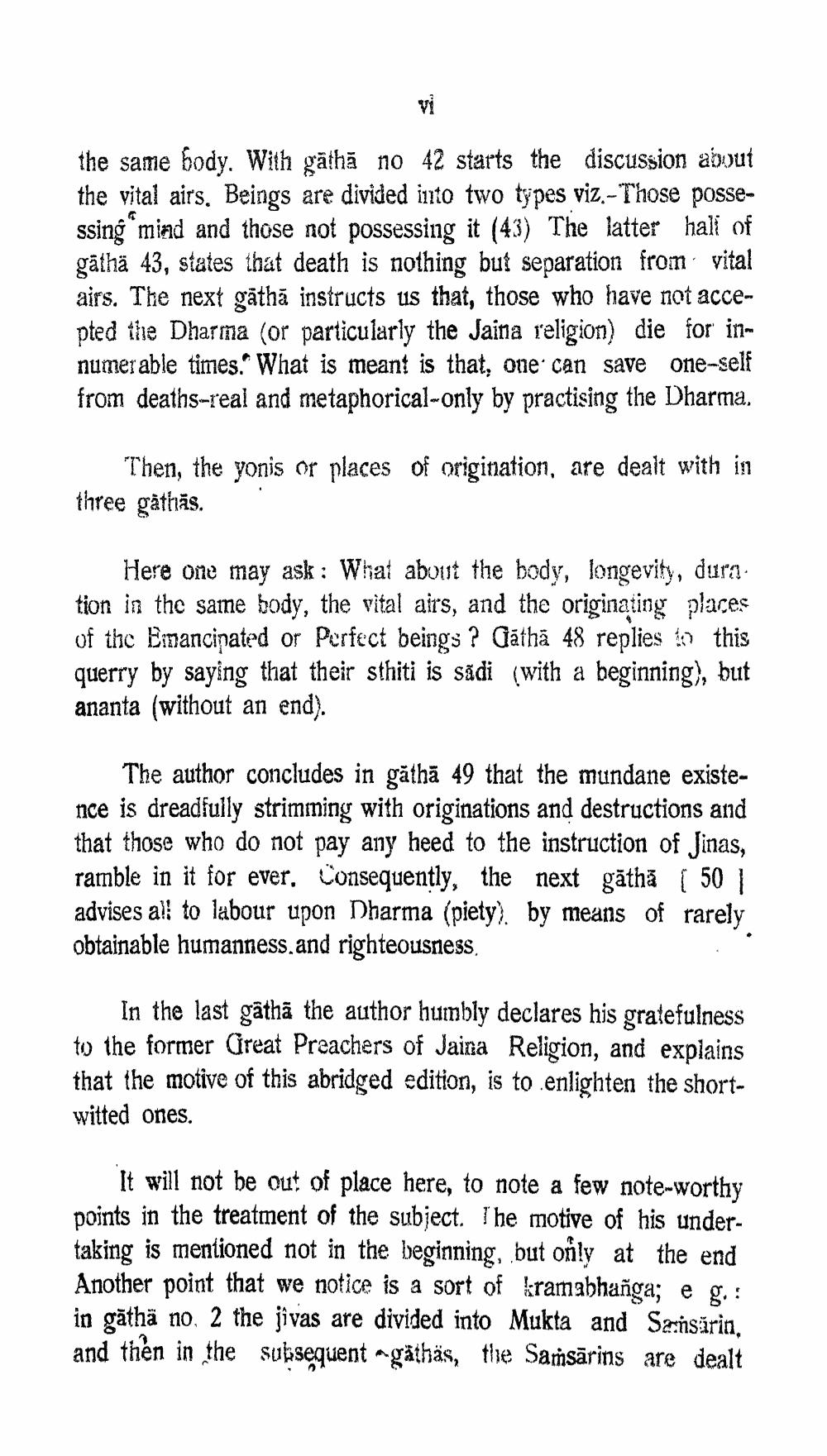________________
vi
the same body. With gathā no 42 starts the discussion about the vital airs. Beings are divided into two types viz.-Those possessing mind and those not possessing it (43) The latter half of gäthä 43, states that death is nothing but separation from vital airs. The next gatha instructs us that, those who have not accepted the Dharma (or particularly the Jaina religion) die for innumerable times." What is meant is that, one can save one-self from deaths-real and metaphorical-only by practising the Dharma.
Then, the yonis or places of origination, are dealt with in three gathās.
Here one may ask: What about the body, longevity, dura tion in the same body, the vital airs, and the originating places of the Emancipated or Perfect beings? Gatha 48 replies to this querry by saying that their sthiti is sadi (with a beginning), but ananta (without an end).
The author concludes in gatha 49 that the mundane existence is dreadfully strimming with originations and destructions and that those who do not pay any heed to the instruction of Jinas, ramble in it for ever. Consequently, the next gathā [ 50 ] advises all to labour upon Dharma (piety). by means of rarely obtainable humanness. and righteousness.
In the last gatha the author humbly declares his gratefulness to the former Great Preachers of Jaina Religion, and explains that the motive of this abridged edition, is to enlighten the shortwitted ones.
It will not be out of place here, to note a few note-worthy points in the treatment of the subject. The motive of his undertaking is mentioned not in the beginning, but only at the end Another point that we notice is a sort of kramabhanga; e g.: in gäthä no. 2 the jivas are divided into Mukta and Sansărin, and then in the subsequent gathas, the Saṁsārins are dealt




